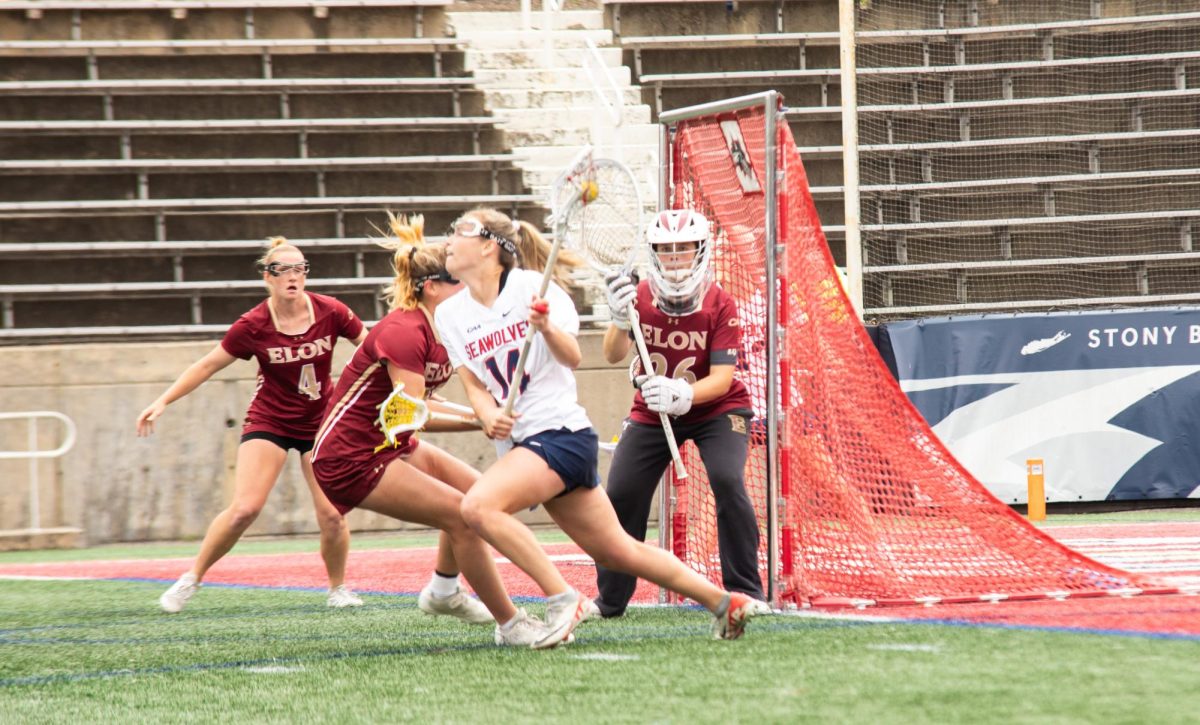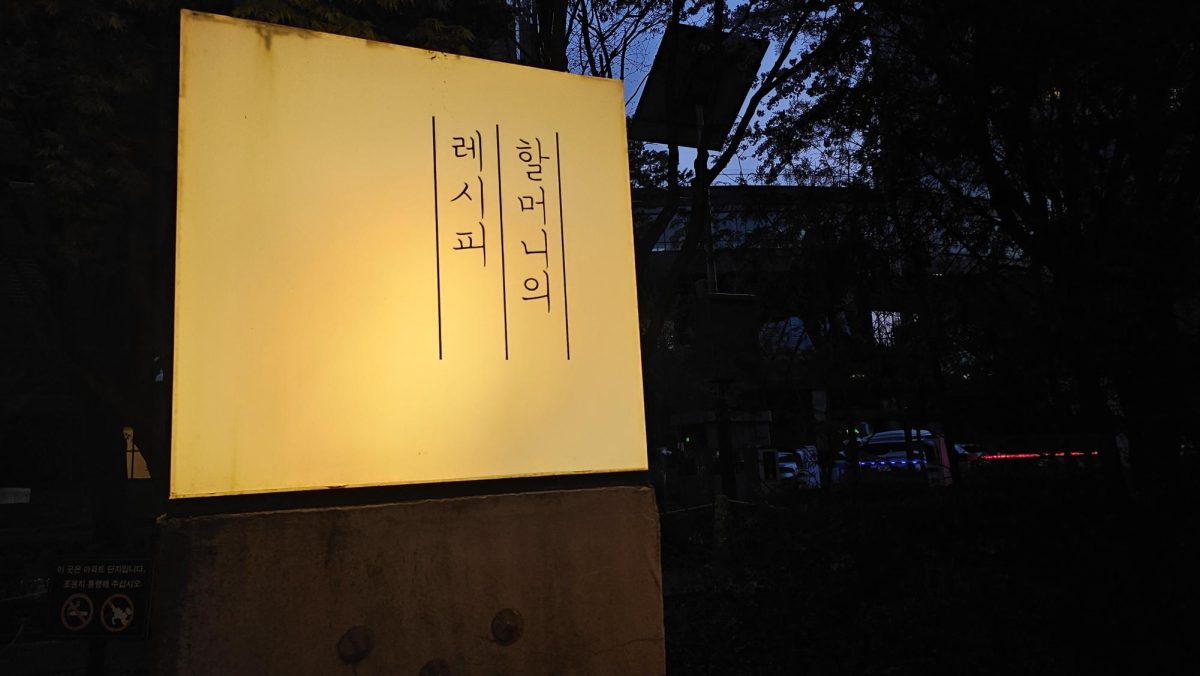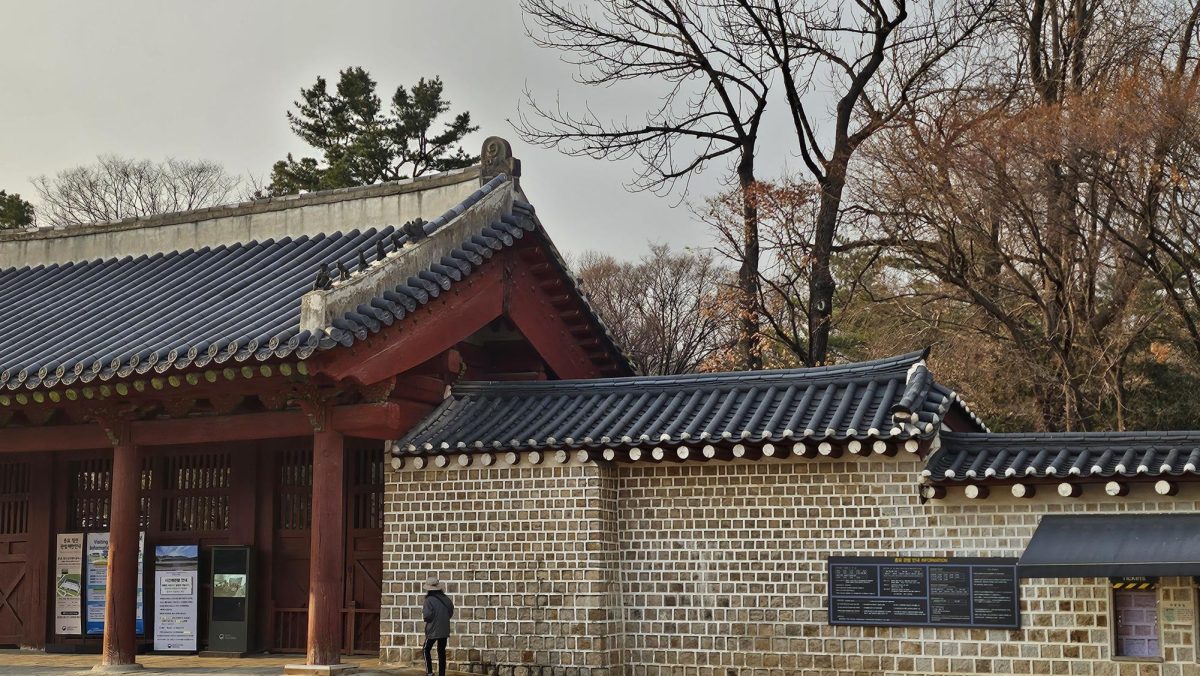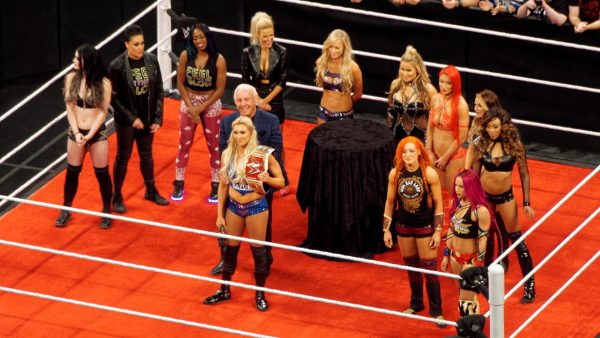
“We’re not going to have a winner, we’re going to have a survivor.”
For wrestling legend and All Elite Wrestling (AEW) commentator Jim Ross, the 2021 St. Patrick’s Day Slam edition of the company’s weekly show, “AEW Dynamite,” was characterized by an image that became both iconic and lucrative.
Ross’ narration of Jacksonville, Fla.’s bloody brawl between female wrestlers Britt Baker and Thunder Rosa — and his prediction of the results — made the physical recoiling of the at-home audience audible as the women bounced back-first off ladders and tables, onto a fresh layer of shiny thumbtacks scattered spike-side up on the floor.
The tacks represented a crowning moment for Baker; with a slim, rubber-gloved hand, she reached over the edge of the ring to retrieve the small velvety bag of metal pins. Staring straight at the camera, Baker dangled the bag menacingly beside her face — already a canvas of crimson, with blood dripping from a gash on her forehead — to adorn a villainous grin.
For Baker, the adage of “red equals green” rang true. At the end of the match, she was, in Ross’ words, a survivor. With her iconic bloodied mug plastered onto T-shirts running for 30 bucks a pop, Baker earned the tee’s title of “Main Event Role Model” and offered her company a significant wad of crimsoned cash.
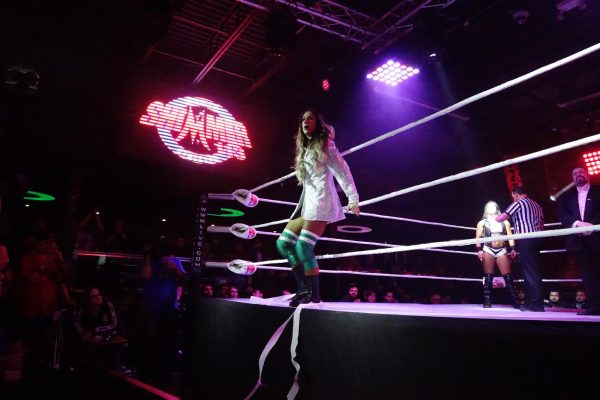
But not every female fighter gets her flowers. It’s rare that they do — as Ruby Soho can attest.
Following a Tag Team Street Fight match in Los Angeles last year, Soho channeled her inner Baker, ending the match with a familiar “crimson mask” donned by her colleague just two years prior. Unlike the positive response to Baker’s match, Soho was subjected to a barrage of hate, with many tweets arguing that “women shouldn’t bleed.”
Though female wrestlers have long been relegated to five-minute matches and sexually-charged storylines, they are finally fighting back. Yet, when they dare dip too close to the level of gore their male counterparts are praised for, they find themselves being disparaged by fans — usually men — swarming X (formerly known as Twitter) and Reddit to take out their pent-up, desk-job anger on women in combat sports.
I love hardcore wrestling but the problem I had with it Is that these are women, they are at a very real threat of death when they do this.
And watching women doing stuff like what they did made me just uncomfortable and was hard to watch.
— APA.❌ (@APAHandle) January 15, 2023
At just 17 years old, Indiana-born professional wrestler Billie Starkz has experienced this double standard firsthand and often harder than her elders in the ring. Starkz began wrestling at the age of 13, toggling between training at wrestling school and attending cheerleading practice. She got her start at Grindhouse Pro Wrestling Academy in Jeffersonville, Ind., which boasts a list of trainers from all wrestling styles and backgrounds, as well as alumni like Game Changer Wrestling’s Cole Radrick. But even with years of experience and professional training, Starkz is still underestimated compared to male wrestlers — especially those who are younger.
“My best friend Nick Wayne, who’s younger than I am, will go bleed and do a bunch of stuff,” Starkz said in an interview with The Statesman, referring to her fellow budding wrestler and AEW signee. “But nobody freaks out about it … I get more repercussions even though I’m older and I’m just a female.”
But in the cases of Baker and Soho, gender is not the only factor at play. Gender expression and notions of conventional attractiveness also drive the reactions. Soho’s tattooed frame, paired with her Kelly green pixie haircut and ever-present black lipstick, is far from the on-screen amusement wrestling fans are used to. The svelte, tan Baker with her flowing brunette locks tends to be more traditionally appealing — much to the dismay of Ella Jay, host of the podcast “A Wrestling Gal.”
“Sometimes people pick and choose who they want to have an uproar about, especially when it comes to women’s wrestling,” Jay said in an interview with The Statesman. “It doesn’t make sense to me sometimes when they were both as brutally, you know, bloody.”
An article by martial arts instructor and sociologist Justen Hamilton entitled, “Breaking Barriers? Examining Neoliberal–Postfeminist Empowerment in Women’s Mixed Martial Arts,” explains this phenomenon. The article was published in Gender & Society: the academic journal of Sociologists for Women in Society, an international organization of social scientists dedicated to improving women’s positions in the field and in society.
Hamilton’s piece illustrates the idea that he calls the “perceived incongruity of femininity and athleticism,” also known as the “female-athlete paradox.” This theory purports that women in sports must jump through hoops to be considered hetero-feminine — or aligning with traditional expectations of what it means to be feminine — while competing in a decidedly “masculine” activity. Soho and her decidedly unique looks aptly represent this theory, as does the negative response to her crimsoning.
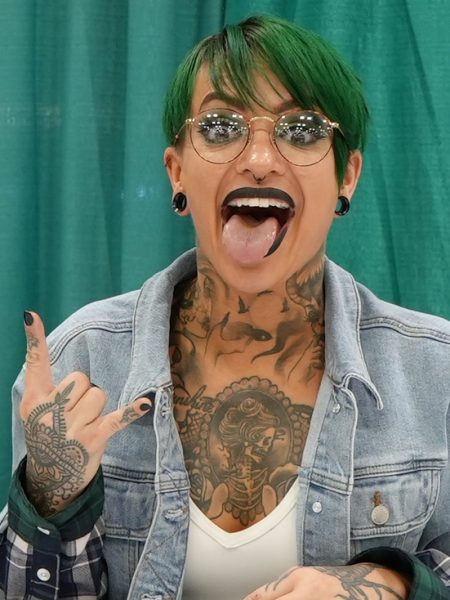
In other words, men prefer women drenched in body oil, not blood.
But not all the femininity of early women’s wrestling has fallen by the wayside in the search for equality.
“A lot of times, I get told that I act like a dude,” Starkz said. “I really don’t. I’m pretty girly. My entire room is pink, I paint, I like my nails done, I get my hair done.” Giggling, she holds up chipped fingernails and confesses that she often snaps off her acrylic manicured nails when in the ring.
But not even maintaining a feminine edge can keep women on television.
In an industry where women’s matches were traditionally considered eye candy and used as an attractive break from brawny male brawls — such as in the infamous “bra and panty” matches of the 1990s — the amount of airtime given to female wrestling matches on television tends to be far less than that of men.
“If you turn on the TV, you’re watching mostly guys,” Starkz said. “Combat sports are like any other sports, but the female talent isn’t being shown as much as the male talent.” AEW’s own numbers illustrate the trend best; in 2022, only 34 of the 150 matches broadcasted on television featured women, amounting to less than 25%.
For Jay, the lack of female wrestling content on television is based on the industry’s view of women.
“They seem to appreciate or value the men more than the women,” she said. “That’s how it presents itself on screen. So, I think as a viewer, you’re also absorbing that same mentality, whether it’s subconsciously or purposely.”
It isn’t just that female talent isn’t being shown; it isn’t even being hired. While independent and female-only companies like World Wonder Ring Stardom and Women’s Wrestling Army may be giving women in the industry a platform, wrestling’s prime-time giants aren’t. Of the 247 current World Wrestling Entertainment Superstars, only 83 — just over a third — are women.
I’ve concluded that AEW is not serious about women’s wrestling. Even on PPV, their title matches don’t get any more time than they get on television, and they’re usually the shortest on the card.
— Leron Ford (@leronford) November 19, 2023
But Starkz is quick to point out that the view of women’s wrestling is different in other countries. In Japanese wrestling promotions like Joshi, women in wrestling — and the violence they commit — elicit far fewer outcries.
“I feel like in the [United States], [there’s] definitely more pushback, versus when I go to Japan … that’s because women’s wrestling over there is more respected,” Starkz said. Rather than restricting female wrestlers within gender norms as is done in the U.S., Japanese women are encouraged to join the sport without stigma.
This discrepancy likely comes from larger cultural dogmas regarding wrestling. Japanese fans are often conditioned to be more serious and respectful of wrestling as an art form, often remaining silent during matches. This is in stark contrast to American wrestling fans, who often start chants and bring signs — and of course, take to X in either support or opposition of the wrestlers. Thus, many women like Starkz travel to Japan to gain respect and fight their way up the wrestling industry ladder.
But no matter where in the world these gals grapple, the pain persists.
“There’s definitely a lot of maintenance and taking care of your body so [you] don’t end up broken,” Starkz said, tracing a row of healed stitches across her scalp, spanning front to back.
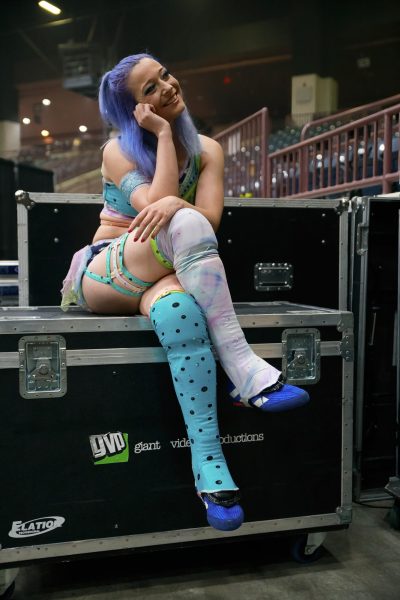
Concern over the level of pain women face in the ring is often used as a crutch for critics who smear them if they choose to wrestle violently and “blade” — the practice of using razors to slice their skin in particular areas to draw blood and feign deeper injury.
Rather than sexualizing women as they have done in the past, many audiences now choose to “infantilize” women and have more intense reactions to seeing them inflict or endure violence than men, who are considered to be stronger and more capable of handling pain.
For those who claim concern over the amount of pain and loss of blood, Jay offers a counterpoint:
“We’re already bleeding out of our uterus every month.”
In an era when women are fighting for bodily autonomy and equality, it’s ironic that they’re constrained from feeling pain on screen and yet may be subjected to it through harmful legislation. For Jay, it’s all about power.
“I think it’s more socially acceptable for the men to bleed because they’re seen as these superior beings … it kind of goes to the scope of the whole intergender wrestling thing,” she said. “A lot of people think that men shouldn’t be wrestling women because women are inferior and women aren’t capable of leveling up to the men’s strength.”
Throughout her dabbling in intergender wrestling, Starkz has found herself to be even more tolerant of her own pain than her male competitors. Starkz recounts her opponent’s reaction to an injury during one of these matches: “He wanted to quit the match. I was like, ‘Nah, screw it, let’s finish the match.’”
What many men both inside and outside of the ring tend to forget is that Starkz and other female wrestlers are still trained professionals.
“We know that these people signed up for this,” Jay said. “We know that they’ve taken the precautions to do this. They wouldn’t sign up and be approved to do this if they already didn’t know the risks of bleeding or injury.”
Having also been trained at Tokyo Joshi Pro-Wrestling, a world-renowned female wrestling company, Starkz is confident in her abilities.
“I’m just like any other person,” she said. “I can cover and take care of my own health. I’ve been trained professionally to do this. If I wasn’t, I wouldn’t be on the show or asking to be on the show.”
In Starkz’s eyes, to be a female wrestler is to be a fighter — with no gender limitations or stigmas attached.
“A competitor, at the end of the day, is a competitor,” she said. “Gender shouldn’t be a factor.”


